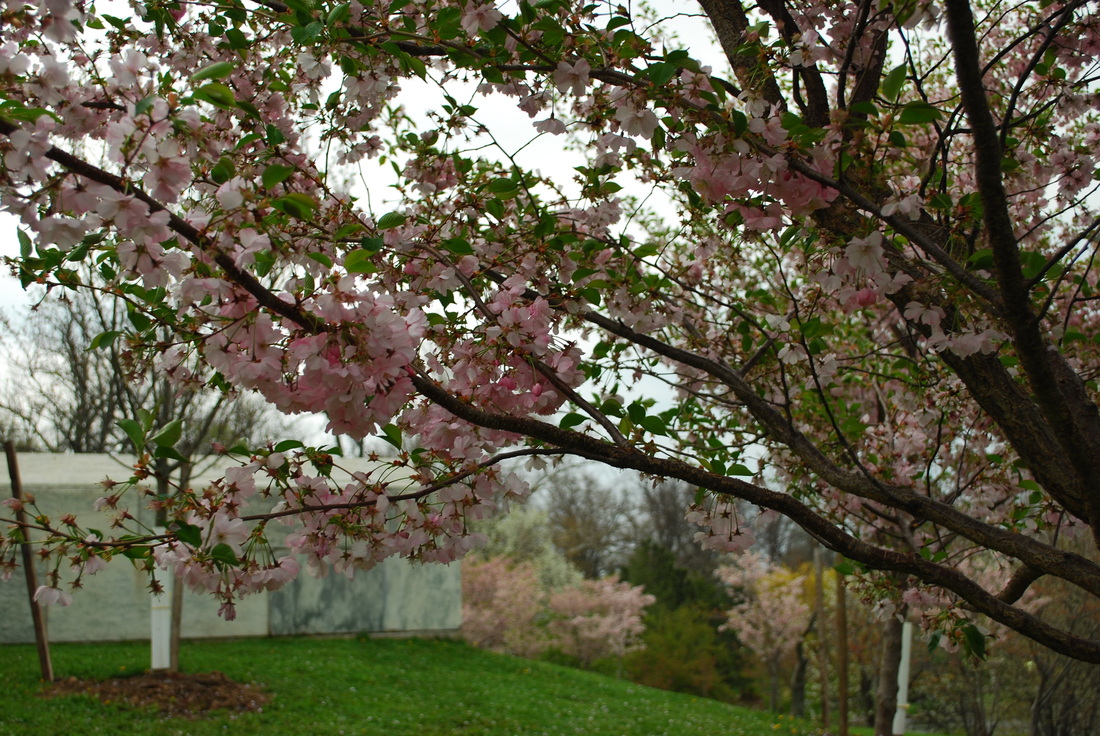|
The Buffalo Cherry Blossom Festival is an Annual Event that started in 2014.
Its original goal was to bring awareness to our Cherry Tree Grove in the Japanese Garden in Buffalo and to support the upkeep of this treasure. The mission has expanded to encourage Cherry Tree Plantings in Buffalo in order to bring a springtime 'Blizzard of Blossoms' to Buffalo, following our Winter Blizzards. |
|
Where is the Japanese Garden of Buffalo?
It is a part of Buffalo's Olmsted Park System, located in Delaware Park. How do I get there? Walk to the Japanese Garden from the parking lot of The Buffalo History Museum at 1 Museum Court which is located at the corner of Elmwood Avenue and Nottingham Terrace. When is it open? The Japanese Garden is open during daylight hours. Entrance is Free. There’s always plenty of parking (and parking is free too). During the Cherry Blossom Festival, street parking is available. Please obey local parking rules and be careful not to park in front of a driveway. We love our neighborhood, and hope that we continue to have a great relationship with our neighbors. |
|
The Japanese Garden is located next to The Buffalo History Museum and is cared for by the Buffalo Olmsted Parks Conservancy and the Friends of the Japanese Garden (an organization of dedicated volunteers.)
The Buffalo History Museum is a building rich in history, as you might have guessed. The building was originally constructed as the 'New York State Pavilion' for the 1901 Pan-American Exposition. It was designed to be the only permanent structure from the exposition. The garden may be entered through two landscaped entrances on the edges of The Buffalo History Museum’s parking lot. The one on the West side has a stepped path that is lined by flowering cherry trees and leads to a monument stone honoring the donors of the original garden. A pathway leading across the hillside below the history museum leads directly to the heart of the hillside garden with rugged stone steps that were placed by master gardeners from Kanazawa. Stepping down through the garden leads visitors through extensive plantings and a dry cascade of Cotoneasters to the Jesse Kregal Pathway. Following this path provides vistas of the garden’s three landscaped islands. Look for the arched stone bridge connecting two of the islands and a famous stone lantern with one foot out in the water, replicating a well-known feature of Kenrokuen Garden in Kanazawa. The Jesse Kregal Pathway continues to the east, leading to a monument of Mozart and on to a pedestrian bridge over the Scajaquada Highway to Hoyt Lake, the Marcy Casino and the Delaware Park Rose Garden. Look for a black granite stone marker that illustrates the layout of the Pan American Exposition at the foot of the pedestrian bridge. Staying on the Jesse Kregal Pathway will eventually lead visitors to the Point of the Meadow restrooms, the Delaware Meadow Golf Course, the popular Ring Road, and the Parkside Lodge, Conservancy headquarters. At the foot of the Japanese Garden hillside garden, a visitor can also turn west and head toward the entrance path and either step up to the parking lot, or continue on to a completely accessible trail. Continuing on the Jesse Kregal Pathway toward the west will take visitors out of Delaware Park. A short walk will lead visitors to the 250’ long mural by noted artist Augustina Droze celebrating the Buffalo landscapes of Frederick Law Olmsted painted in 2011. The Jesse Kregal Pathway stretches 1.8 miles to the Niagara River. The Niagara Riverwalk stretches to Niagara Falls and Lake Ontario to the north, or the Peace Bridge, and Lake Erie to the south. Download a brief history of the Japanese Garden |









